
Off The Beaten Path
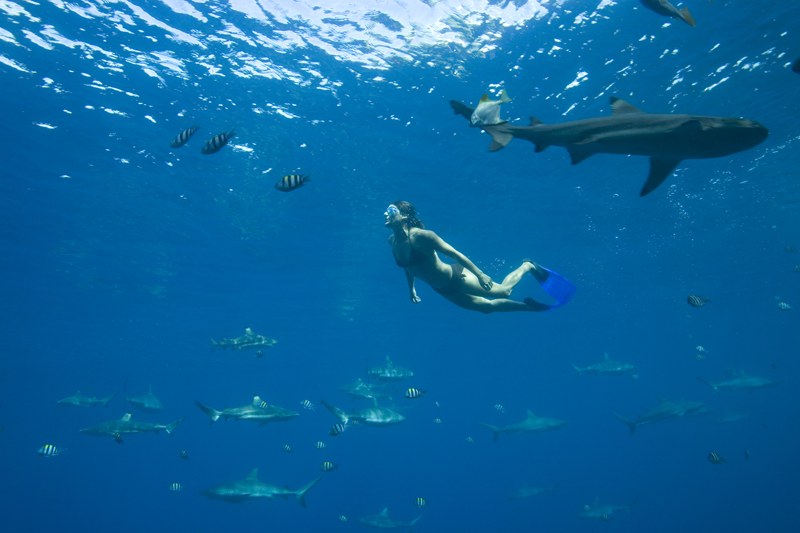
© Latitude 38 Media, LLC
Gar and Nicole Duke of the Sausalito-based Pacific Seacraft 40 DreamKeeper started cruising two years ago in search of safety rather than adventure. And to get away from groups of insular American cruisers to explore less travelled areas with a more international group of sailors. They found what they were looking for in spades in the Solomon Islands, which are to the northeast of Australia.
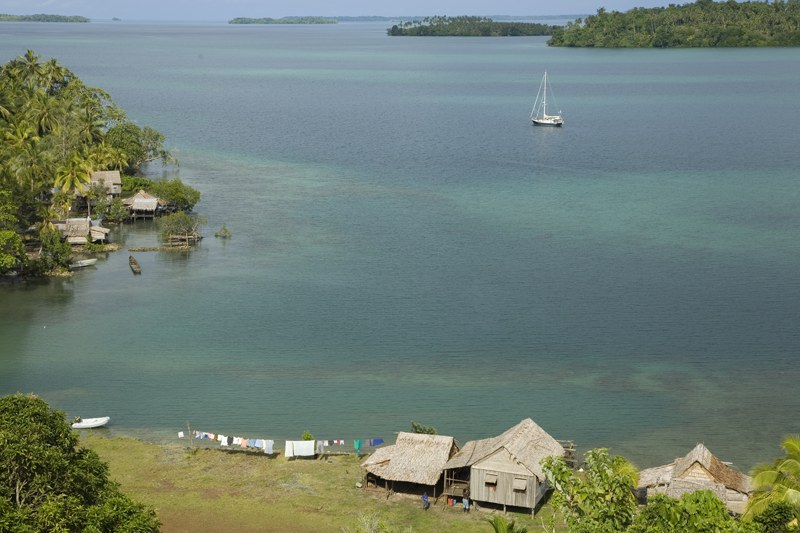
© Latitude 38 Media, LLC
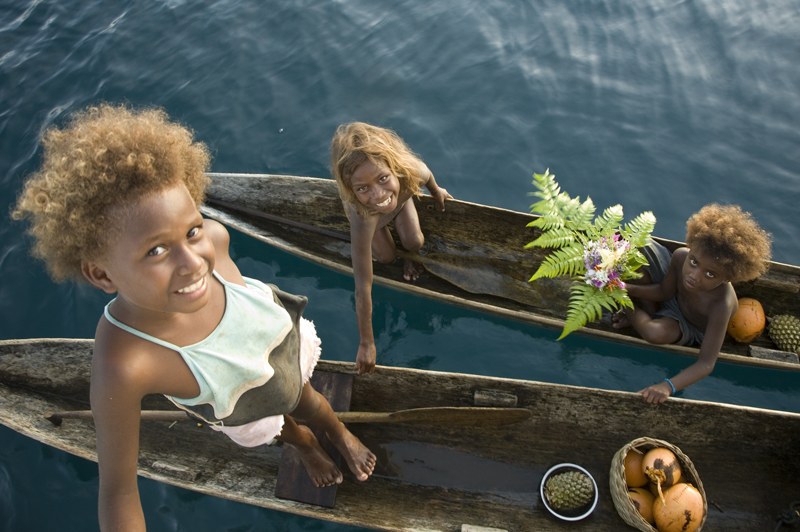
© Latitude 38 Media, LLC
"We hope our photos inspire readers to not only light out on their own dreams, but to take risks and find adventure in their lives. During the years we spent in Sausalito preparing for this journey, countless people told us that we were too young, too inexperienced, or felt the need to try to scare us with stories of storms and pirates. And once we entered the world of ‘cruisers’ crossing oceans, the scare stories actually got worse. People would tell us to avoid this place or that, either because of the people, weather or navigation hazards. Some of this information was valuable, but most often we had delightful experiences where we were warned not to go."
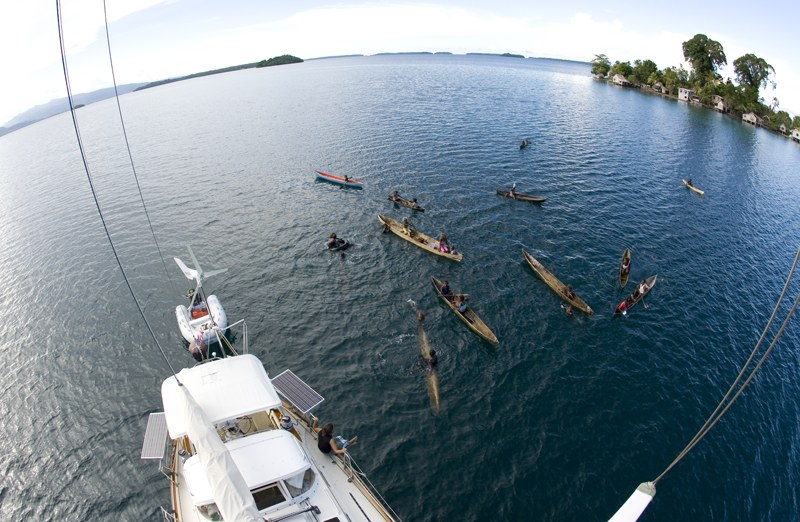
© Latitude 38 Media, LLC
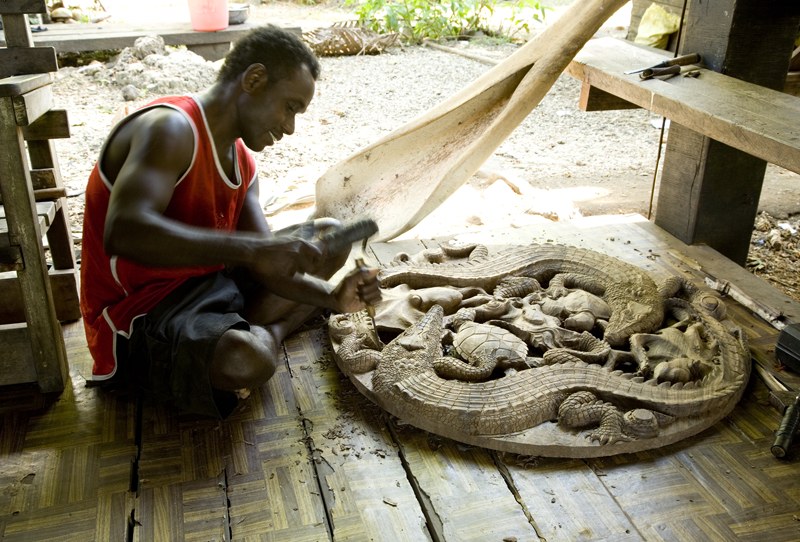
© Latitude 38 Media, LLC
For more on the cruise of the DreamKeeper, see the January 1 issue of Latitude 38.
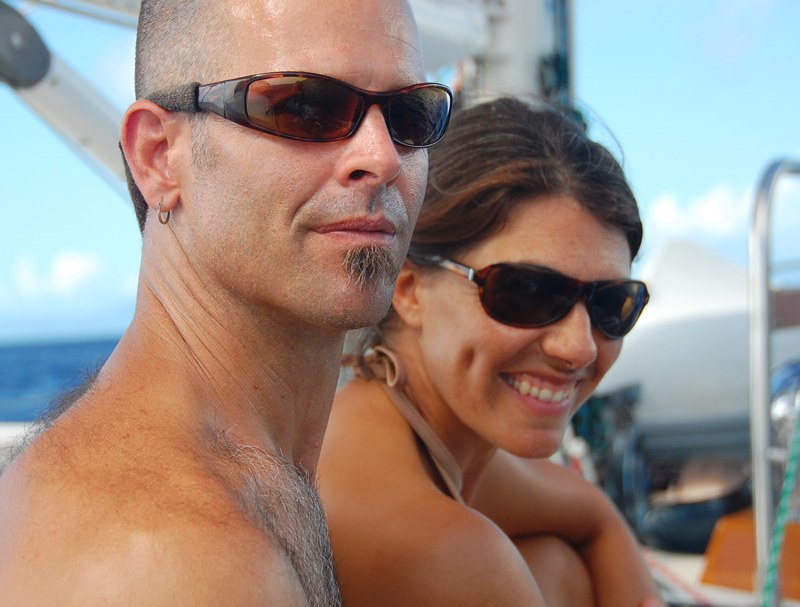
© Latitude 38 Media, LLC
Next Time Turn on the Chartplotter
Around 11 p.m. on Saturday night, the skipper of the 52-ft motoryacht Giant Feet ran the boat up on Coyote Point Marina’s sea wall, which was covered by water thanks to unusually extreme tides. KGO Channel 7 interviewed the owner, who claimed he was unaware of the sea wall’s exisitence, which is clearly marked on NOAA charts, and mistook a light ashore for that of the marina’s. All 26 people onboard — they were having a birthday party — were pulled off uninjured in the wee hours of Sunday morning by Coast Guard personnel. Later Sunday afternoon, the boat, which had laid over as the tide went out, reportedly turned turtle as the tide came back in. The Coast Guard has installed oil booms around the wreck while the owners are coordinating a salvage operation.
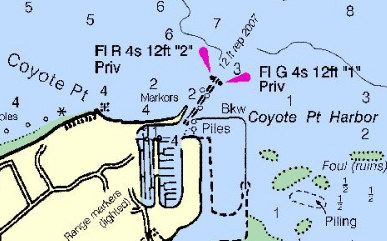
This is a great reminder to keep your bearings when you’re out on the water, especially at night, consult your chart often and never cut corners. Navigational aids are there for a reason.
Sell Your Boat!
"As a result of my Classy Classified in a recent issue of Latitude 38, our boat sold quickly. Thanks for your help in making the placement of the ad easy and for your great customer support!"
If you want a proven method to sell your boat, it’s not too late to get your ad into the January issue of Latitude 38 — the deadline is this Thursday at 5 p.m. A 40 word ad is just $40, and best of all, you can do it all online.
Sailors Run Bounding Along
Readers — On December 11, Jeff Hartjoy set off from Callao, Peru, on a singlehanded nonstop trip around Cape Horn, bound for Buenos Aires, Argentina, aboard his Baba 40 Sailors Run. We’ll be running his reports in ‘Lectronic throughout his voyage.
I’d intended to sail out of Callao but the wind was light and I had to start the engine to avoid a collision with a 500-ft ship which would have meant the premature end of this adventure. Luckily the wind picked up after a few hours and I was able to shut down the engine. My biggest challenge for the first few days was to steer clear of hundreds of fishing boats. I was 180 miles offshore before I could relax my vigilant watch.
It’s taken several days to figure out a workable watch system. My initial idea of getting up every 20 minutes was difficult because it took so long to get back to sleep. I’ve modified it for the conditions and my current position — I stay up all day then, at night, set a 15-mile guard zone on my radar that will sound an alarm if a ship comes within that zone. I get up every two hours or so for a check, then back in the rack.
My daily runs have been good so far — averaging 135 miles — with no engine hours since clearing Callao . . . until last night. I awoke at 2 a.m. to an unfamiliar smoothness to the ride. A quick check of the radar showed we’d slowed to 3.7 knots. I checked the wind indicator which showed we were still close-hauled. Then a look at the GPS showed we were sailing 100º off course! Clearly, the wind had shifted. As I attempted to tack to get back on course, a micro twisting wind wrapped the genoa around the forestay about five times. This thing was a freakin’ mess! I tried several things to unwrap it, including motoring around in circles, but nothing worked. I finally woke up enough to realize that, by bringing both sheets forward and unwrapping them individually, the mess would go away. Thankfully I got it cleared before the wind intesified.
I’ve seen three consecutive green flashes as the sun dropped over the horizon, each one more spectacular than the last, and the seas have turned from a turbid brownish green to a fantastic cobalt blue as I sail hard on the wind, deeper into the southern Pacific Ocean.
I was reminded by my daughter, Ginger, why I’m doing what I’m doing. "Dad, when we were little kids, we’d go into the bathroom and see, written on the mirror in soap, ‘Hawaii 1978 and the World 1982’." I’d forgotten about these goals but she hadn’t. "That’s why I can accept what you’re doing as it’s been your lifelong dream to cruise the world. And you’re doing it." I was late getting out here to live my dream but I have to admit it’s everything I hoped it would be. The dream has gotten me through a lot of tough times and made facing each day a little easier.
More Good Reads
As noted on Monday, we’re doing quickie reviews this week of some of the new books we’ve received over the past year, the idea being that they might make nice gifts for the sailors on your holiday list. Yes, we know you can download the entire works of Shakespeare onto an iPhone these days. But there’s still a lot to be said for shutting off all electronic devices — except lights — and curling up for a good read the old fashioned way.
- We’ve often wondered why anchoring, one of the most common and important acts of cruising, is often done so cluelessly. One reason might be the stodgy and impenetrable tomes that have been written on the subject over the years. Thankfully, this isn’t one of them. Happy Hooking — the Art of Anchoring (White Seahorse, Inc., $15.95) is well organized, well illustrated, user friendly in its delivery, and even fun — authors Alex and Daria Blackwell even tell you the proper way to organize one of those round ‘sunflower’ raft-ups. Reading just a few pertinent chapters in this easy-to-understand book will not only ‘clue you in’, but help guarantee that your boat will still be there when you come back from a trip ashore.
- The world is going ever greener — well, the nation, at least — and there’s lots boaters can do to help. In Boat Green (New Society Publishers, $17.95), author Clyde Ford addresses dozens of ways to do this, from wind and solar power, to getting the most out of batteries, to safe ways to encounter marine mammals — even a bit of philanthropy for those interested in joining or organizing ‘green marine’ movements of their own.
- Arcadia Publishing specializes in local history books. Three in the series that might be of interest to local boaters are The California Delta, Point Cabrillo Light Station and The Houseboats of Sausalito ($19.95 apiece). The latter was authored by the late Sausalito historian and cartoonist Phil Frank, and is as fascinating as his periodic lectures on local history used to be. All three books are heavy with photos tracing the subject matter from the early days until the present.
Vendee Globe Update
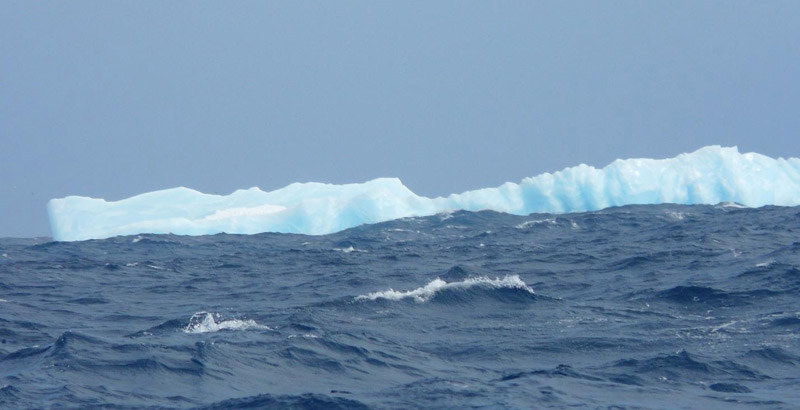
Attrition is a constant in the Vendée Globe Race. Now that most of the 19 boats remaining — out of the 30 that started — are about halfway around the world, it looks like the amount of attrition is well on its way to the 50% mark many people have come to expect. Given that the entire fleet has been lashed by winds to 65 knots in the Indian Ocean already, not to mention the 50 knots they got on the race’s first night, it’s pretty amazing there are still 19 boats still racing. There’s ice, and apparently lots of it, which hasn’t been respecting the sanctity of the race organizers’ "Ice Gates" — mandatory waypoints the boats must pass that are intended to keep them from pushing too far south.
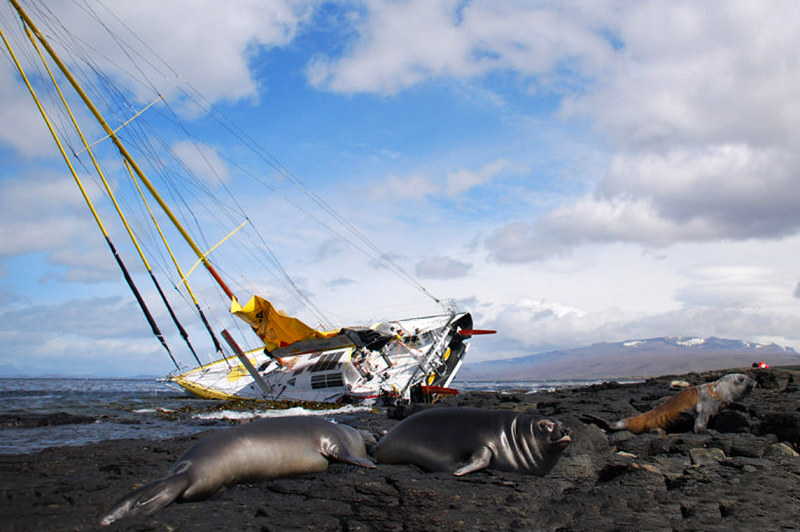
After sailing solidly in the lead for the last week or so, Jean-Pierre Dick’s Paprec-Virbac II collided with an unidentified object that broke the casing of one of his rudders, forcing him to slow down. This allowed Mike Golding — who’s had plenty of ’round the world disasters himself — to slip into the lead. But it wasn’t to last. In a 50-knot squall, Golding’s Ecover III became the race’s most recent dismasting.
Swiss sailor Dominique Wavre was forced to divert to the Kerguelen Islands with keel-head damage which rendered his Temenos II‘s canting keel uncontrollable. Wavre settled into Morbihan Bay in order to effect repairs which have since proven unsuccessful. He’s issued a pan pan and donned his survival suit, unable to return to the Kerguelens in the stronger-than-forecasted 45-knot breezes he left in.
PHOTO
Also making a stop at the Kerguelens was Bernard Stamm’s Cheminées Poujoulat. Stamm elected to divert there to fix some nagging problems, but ended up creating another. While attempting to pick up a mooring set up for him by the French crew that mans this remote island outpost, Cheminées Poujoulat went aground in 45 knots of breeze, punching a hole in the boat’s port side. Fortunately for Stamm, the cargo vessel that services the island was able to hoist the boat aboard after she was refloated, and both boat and skipper are en route to Reunion Island.
New leader Michel Desjoyeaux aboard Foncia — who restarted from Les Sables d’Olonne some two days late — is cranking along at about 50° south, some 800 miles south of Cape Leeuwin, Australia, in a fairly tight peloton with Roland Jourdain’s Veolia Environment, Jean Le Cam’s VM Matériaux and Seb Josse’s BT.
